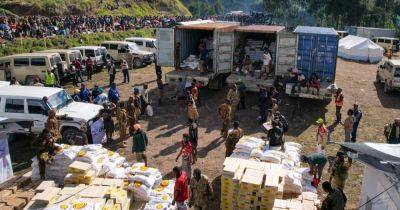At least 2,000 feared dead in Papua New Guinea landslide. These are some challenges rescuers face
BANGKOK (AP) — The Papua New Guinea government said more than 2,000 people are believed to have been buried alive in a landslide in the South Pacific island nation, after the side of a mountain came down in the early hours of Friday morning when the village of Yambali was asleep.
The settlement is located in a restive and remote area in the interior of the poor, rural nation off the northern coast of Australia, making search and rescue efforts complicated and hazardous.
The government death toll is roughly triple the U.N. estimate of 670 killed. The remains of only six people had been recovered so far.
In a letter seen by The Associated Press to the United Nations resident coordinator dated Sunday, the acting director of Papua New Guinea’s National Disaster Center Luseta Laso Mana said the landslide “buried more than 2,000 people alive” and caused “major destruction” at Yambali village in the Enga province.
Estimates of the casualties have varied widely since the disaster occurred, and it was not immediately clear how officials arrived the number of people affected.
Here’s a look at some of the challenges:
DIFFICULT ACCESS, RESTIVE POPULATION
The village of at least 4,000, but believed to be substantially larger, is in a mountainous and forested part of Papua New Guinea’s Enga province. It’s located alongside a winding highway to the town of Porgera and a mine that has produced billions of dollars of gold but whose security personnel have been accused by rights groups of abuses.
The highway was covered by the landslide, effectively cutting off Porgera and the other villages past Yambali from the provincial capital of Wabag, some 60 kilometers (35 miles) from where the disaster occurred.
Emergency responders have brought







